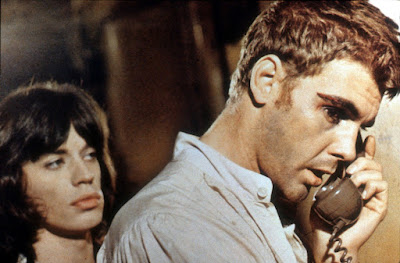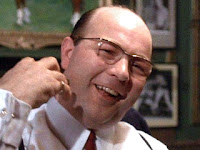 |
| From left, Det. Ed Exly (Guy Pearce), Det. Bud White (Russell Crowe) and Det. Jack Vincennes (Kevin Spacey). |
"L.A. Confidential" just had its 25th anniversary and that makes us look anew at the astounding saga of police corruption in the City of Angels, circa 1953. A quarter of a century later the film’s authentic retro look, snappy musical soundtrack and motley selection of characters still make the story hum.
Two of a Kind
Deep wounds make great characters, and two of the film's protagonists, Bud White (Russell Crowe) and Ed Exly (Guy Pearce), are both emotionally scarred, yet polar opposites.
White is a thug who beats up bad guys when enlisted to do so by his boss, Capt. Dudley Smith (James Cromwell). But he's also a staunch protector of women. Turns out his dad used to beat his mom, so Bud has a soft spot in his heart for battered females, but not for much else.
Exly is a self-consciously ethical cop who wants to follow in his father's rather large footsteps. His dad was a policeman killed in the line of duty, allegedly by a purse snatcher. But given the corruption and lawlessness of the L.A. Police Department in that era, the story of the senior Exly's demise is questionable. Was he bumped off for not turning a blind eye to his fellow officers' malfeasances? In a telling moment Smith tells Exley to get rid of his steel framed glasses, saying he can't think of another man in the department who wears them — another way of warning him to not look too closely at the goings on around the station house.
Both White and Exly are flawed characters, too. White pummels out-of-town gangsters looking for a foothold in L.A. and looks the other way when unsavory activities take place. Exly is a polished social climber who never misses an opportunity to advance himself. He's more than willing to rat out brutal cops who beat up Mexicans being held in the station jailhouse. But in return for his testimony he demands to be bumped up to lieutenant. He knows that he’ll be hated by the other cops, but that doesn’t matter to him. He’s like the smart nerd in high school who gets tripped and wedgied in the hallways, but takes solace in the fact that he’ll someday be his antagonists’ boss.
Jack the Joker
There’s also Det. Jack Vincennes (Kevin Spacey), the police consultant on “Badge of Honor,” a TV show that is a stand-in “Dragnet.” Police brass removed him from the show as payback for bad behavior and he hopes that solving a nasty murder case will put him back in the department’s good graces. But his freelance investigation takes a high toll on him. A bit of a jokester, a gag he plays on his boss turns out to be a genius bit of black humor that also plays a major role in the plot.
As Exly and White begin to understand how corrupt the department is, it's their wounds that make them want to rout out the rot of lawlessness that surrounds them. In White's case, he's become involved with a call girl, Lynn Bracken (Kim Basinger), who belongs to a cadre of ladies of the night who have been given plastic surgery to make them resemble movie stars — she looks like Veronica Lake. She's in danger of being chewed up by the corrupt men pulling the strings who routinely use and discard people who have outlived their usefulness. White is intent on protecting her, and to do that he must bring down the big boys.
A Substantial Sacrifice
Exly has been cited for bravery in killing a group of alleged kidnappers and rapists, but he later learns their guilt is questionable and proof exists that they were framed. Then a plot to bump him off goes awry and he’s convinced it’s time to act. By calling out the corrupt forces within the department he will lose the prestige he’s earned and perhaps his lieutenant bars. Despite his political instincts, he’s willing to tear it all down “with a wrecking ball.”
There are a number of plot twists that grab us, all of which lead to an extended shootout in a decrepit abandoned motel on Victory Blvd. It’s the perfect setting for the wrap-up. It’s the place where Dudley Smith takes undesirables and Bud White beats them. The building’s shabbiness reflects the systemic rot that dominates the police department. It’s also a relic of California’s tourism boom. Unlike the sunny picture postcards shown as the opening credits roll, the state’s image as a windswept paradise is a phony public relation gimmick, and like the motel, is rotten on the inside.
The conclusion manages to avoid crime film clichés. Instead, we see the grim choices that one faces when taking on institutionalized corruption. It’s not a clean sweep of bad guys, but a blow to departmental abuse of power — at least in this instance. Of course, there’s a coverup of what actually took place behind the scenes, and that’s to be expected. It’s a story about the L.A. Police Department, after all.













